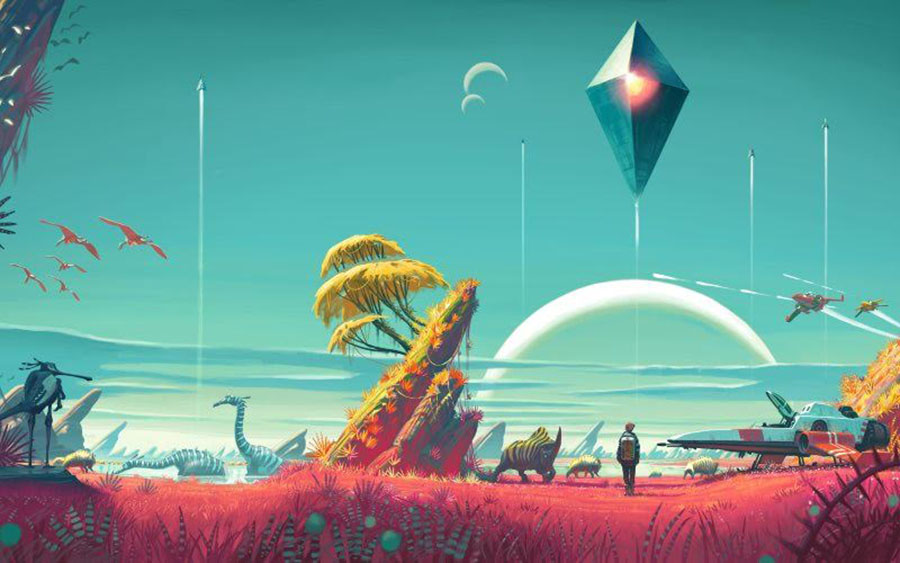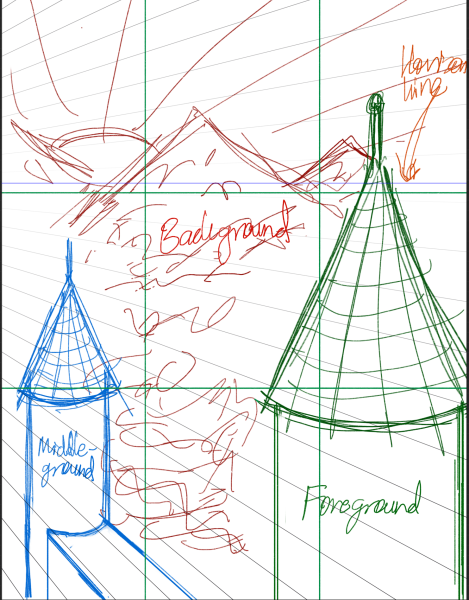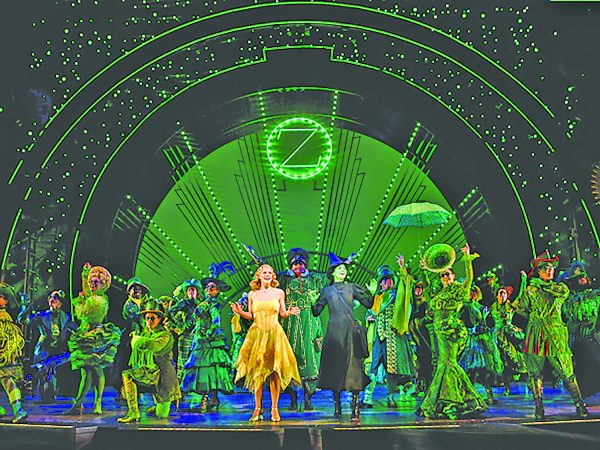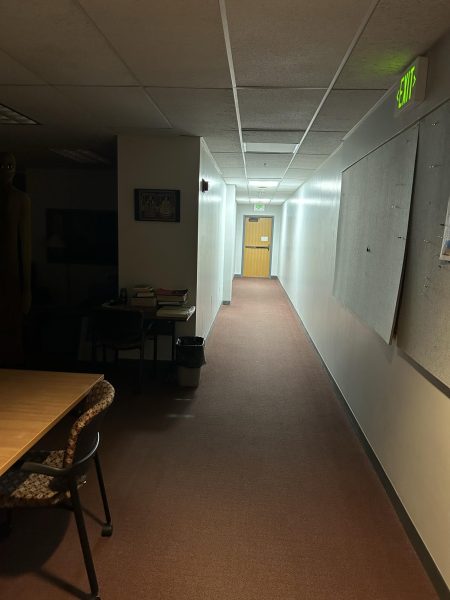“No Man’s Sky” update reinvigorates game
To the dismay of many excited fans, Aug. 9, 2016, birthed one of the biggest flops in gaming history: “No Man’s Sky.”
This space survival game created a massive hype train equaled only by large titles such as “Halo,” “Call of Duty” or “Fallout.” The developers, Hello Games, promised an open-universe, multiplayer space exploration survival game, where players leap planet-to-planet endlessly toward the center of the universe. Unfortunately, they didn’t keep those promises.
Hello Games was founded in 2008. They have been staffed by a small group and only released four games: the Joe Danger trilogy and, most recently, “No Man’s Sky.”
At release, “No Man’s Sky” offered players an experience to freely explore oddly colored planets populated with disproportionate beasts. The gameplay consisted of repeatedly mining resources until the player’s inventory is full, and then using it all for fuel to reach another planet to start over again and again.
To break up the repetition, the game constantly crashed or glitched players through the ground with no way back. Vast numbers of players asked for refunds, searched social media for word from the developers, and sent countless complaints to Hello Games.
Media outlets may have overestimated the amount of backlash. According to Hello Game’s Twitter, @NoMansSky, Sean Murray, director of the game, posted, “Even though less than one percent of players have raised support issues, we’re going to resolve roughly 70% of them this week.”
The reason behind all the hype was the practically infinite size of the game. “No Man’s Sky” uses procedural generation to create the game as players progress through it.
There are thousands of star systems to explore, each with its own solar system of planets surrounding it. As a player discovers each planet, every element of the planet is randomly selected from game files to build a unique world.
For creatures specifically, the game has pre-made components (limbs, torsos, heads, wings, etc.) which are assembled together into one being, which then appears on the newly discovered planet. This style of creation is used for all plant and animal life, terrain, and atmospheric conditions.
A key feature of this system is its ability to adapt lifeforms to their environment. If a planet has a toxic atmosphere, it will contain toxic plants and creatures.
One of the biggest disappointments during “No Man’s Sky’s” release was the disgusting, deformed creatures that replaced the majestic animals in the trailers. Instead of dinosaurs or crazy-colored large cats, players saw something like a very round hippo with a reptilian face and giraffe legs that look far too small to support the body.
Before long, the name “No Man’s Sky” started to leave a bad taste in gamers’ mouths. While many players turned away, Hello games worked tirelessly on customer support and the development of their first update.
During November 2016, Hello Games announced the Foundation Update, which added game difficulties, bases, and other features to give players a reason to stop for more than just refueling. Along with the normal difficulty, creative and survival modes are now available for an easier or more difficult experience.
The crown jewel of this update was custom base building and freighters. A new device, called a Signal Scanner, can be crafted to search for base locations in which players design their own habitable structure. If players choose to live on the move, freighters were implemented into the game to haul huge amounts of resources across the galaxy.
Along with this massive update, Hello Games posted on their Twitter, “If you could have lived our lives over the last months, you’d know how meaningful this is. Here’s update 1.1.” The release of the Foundation Update fixed most of the issues impeding people’s ability to play the game, while also taking the first step toward filling the gameplay void of “No Man’s Sky.”
On March 8, 2017, the second No Man’s Sky update, the Pathfinder Update, was released with a focal point on altering travel. This update brought a new wave of game-changing planetary vehicles, weapons and renovated graphics.
The Nomad, Roamer and Colossus are planetary vehicles which the player can use for exploration and defense while discovering new planets.
Along with these vehicles, 40 new building parts have also been added to the list of buildable items in “No Man’s Sky.”
The largest gameplay change in this update was the implementation of ship and weapon classes, which allows players to choose their own specialized way to play the game. Fighter ships are marketed toward hostile players, while hauler ships are more fitting for traders.
The same goes for weapons, with pistols aiding in mining and rifles in combat.
No Man’s Sky had an enormous leap graphically to 4K on PC and PS4. To take full advantage of the updated graphics, Photo Mode was implemented into the game, allowing players to freeze the action while they set up the perfect screenshot to share with the gaming community. To match the new visual beauty of No Man’s Sky, Hello Games included new soundscapes, composed by 65daysofstatic, to accompany travelers along their voyage.
The third, and most recent, update to “No Man’s Sky,” the Atlas Rises Update, was released early last month, which finally brought a true storyline to the game. Sean Murray posted on Twitter with the newest update, “Atlas Rises, our Anniversary Update. This means a lot to us. So much has changed in a year.” After a year of slow fixes and new additions, “No Man’s Sky” has finally become the game it promised to be.
Thirty hours of story content has been added with the introduction of a new race, which can travel inter-dimensionally. Previous to this update, only three intelligent races have appeared within the game, each having their own dialect and culture.
The galaxy map, showing all the star systems that players can visit, received new filters for conflict, economy and wealth filters so that players can base their travels on safety and economic stability. Another travel aid added with this update is the use of ancient portals, allowing for players to travel to another player’s home planet, to previously discovered planets, and randomly throughout the universe.
Being able to visit another player’s home directly is bringing a new dawn of multiplayer to No Man’s Sky. Currently, players can only see each other as a glowing orb and hear each other at short distances, but Hello Games is still adding new fixes and working on new updates constantly.
Atlas Rises presented a bright future for “No Man’s Sky,” showing that small development teams can still compete with large franchises. It took a year, but the game finally compares with what was promised pre-release, and it can only be improved from here.







Robert B. Marks • Oct 3, 2017 at 1:54 pm
You will probably want to know that this article has been reprinted here: https://theenterprisedaily.com/2017/10/03/no-mans-sky-update-reinvigorates-game
…and credited to a Bill Thompson.
Call it a hunch, but I don’t think that was done with permission.